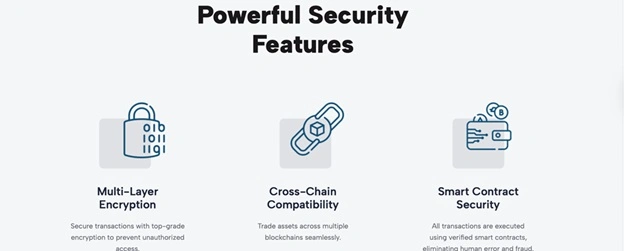With 2025 already underway, investors are looking for smart short-term investment plans that provide safety, liquidity, and optimal returns. Whether you’re saving for a major purchase, an emergency fund, or just looking to grow your wealth without locking your money in for years, choosing the right short-term investment plans is crucial.
In this guide, we explore some of the best short-term investment options in India for 2025 that balance risk and return while ensuring quick access to funds.
Why Consider Short-Term Investments in 2025?

- Market Uncertainty: With economic fluctuations, short-term investments offer stability.
- Liquidity Needs: Helps manage unexpected expenses without financial stress.
- Low Risk Exposure: Most short-term options are designed for capital protection.
- Flexibility: Investors can park their money for months or a few years based on financial goals.
Top Short-Term Investment Options for 2025
1. Fixed Deposits (FDs) – Secure and Reliable
Fixed deposits remain a popular choice due to their safety and fixed returns. Interest rates in 2025 are expected to remain competitive, making FDs a reliable investment.
Why Choose FDs?
- Interest rates between 5% to 7.5% per annum.
- Tenure options from 7 days to 5 years.
- Premature withdrawal allowed (with penalty).
2. Recurring Deposits (RDs) – Monthly Savings with Fixed Returns
Recurring deposits are perfect for individuals looking to invest small amounts monthly while earning stable returns.
Why Choose RDs?
- Guaranteed returns between 5% to 6.5% per annum.
- Ideal for disciplined savings.
- Flexible tenure ranging from 6 months to 10 years.
3. Debt Mutual Funds – Low-Risk Market Exposure
Debt mutual funds invest in fixed-income securities and are suitable for those seeking slightly better returns than FDs with minimal risk.
Why Choose Debt Mutual Funds?
- Returns between 5% to 8% per annum.
- Diversification across bonds and securities.
- Low volatility compared to equity funds.
4. Liquid Funds – High Liquidity, Low Risk
Liquid funds are perfect for short-term investments as they provide immediate liquidity while offering better returns than savings accounts.
Why Choose Liquid Funds?
- Returns of 3% to 6% per annum.
- Funds can be withdrawn within 24 hours.
- Ideal for emergency funds.
5. Treasury Bills (T-Bills) – Government-Backed Security
T-Bills are government-issued securities with short maturity periods, making them a safe short-term investment option.
Why Choose T-Bills?
- Tenure of 91 days, 182 days, or 364 days.
- Risk-free as backed by the government.
- Competitive returns compared to traditional savings.
6. Post Office Time Deposits – Safe and Government-Backed
Post Office Time Deposits offer similar benefits as FDs but are backed by the government, making them one of the safest investments.
Why Choose Post Office Time Deposits?
- Interest rates between 5% to 6.7% per annum.
- Flexible tenures of 1, 2, 3, and 5 years.
- 5-year deposits qualify for Section 80C tax benefits.
7. Corporate Fixed Deposits – Higher Returns, Moderate Risk
Corporate FDs offer higher interest rates than traditional bank FDs but come with slightly higher risk.
Why Choose Corporate FDs?
- Returns between 7% to 9% per annum.
- Lock-in periods between 1 to 5 years.
- Suitable for moderate-risk investors.
8. Gold Investments – Hedge Against Inflation
Gold remains a strong investment option for short-term investors looking for stability and inflation protection.
Why Choose Gold?
- Invest through Gold ETFs, Sovereign Gold Bonds (SGBs), or digital gold.
- Acts as a hedge against market instability.
- Highly liquid asset.
How to Choose the Best Short-Term Investment Plan for 2025?
1. Identify Your Investment Horizon
Determine whether you need access to funds within 3 months, 1 year, or 3-5 years. Investments with a longer horizon typically offer better returns.
2. Assess Liquidity Needs
If you need access to funds quickly, opt for liquid funds, T-Bills, or short-term FDs instead of lock-in options like PPF or long-term FDs.
3. Balance Risk and Return
Investors with a higher risk appetite can opt for debt mutual funds or corporate FDs, while conservative investors should stick to fixed deposits or government-backed schemes.
4. Consider Tax Implications
Some short-term investments are taxable, while others offer tax benefits. Choosing tax-efficient instruments can help maximize your earnings.
Who Should Invest in Short-Term Investment Plans?
- Salaried Professionals: To park surplus funds for short-term goals.
- Retirees: To earn stable returns with minimal risk.
- Entrepreneurs: To manage cash flow efficiently.
- Young Investors: To build emergency funds and short-term savings.
- Investors Looking for Safety: To diversify and protect capital.
Final Thoughts: Selecting the Best Investment Plan in India for 2025
Building a short-term investment plan for 2025 requires careful consideration of liquidity, returns, and risk factors.
For those looking for the best investment plan in India, diversifying across low-risk instruments like FDs, debt mutual funds, and treasury bills ensures stability, while options like corporate FDs and gold can provide better returns. By evaluating your financial goals and risk tolerance, you can build a solid short-term investment portfolio and maximize your earnings in 2025.



